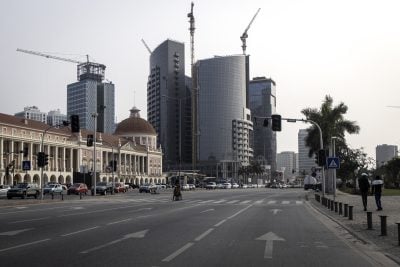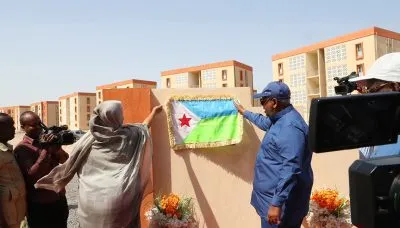With fears of a trade war easing and major projects such as Simandou in Guinea being rolled out, prospects are encouraging for African mining in 2020. Neil Ford reports
When the US and China signed a preliminary “Phase 1” deal to ease their trade hostilities on 15 January, hopes were high for a stabilisation of the mining commodities market on which many African exporters depend.
Copper was one of the first commodities to see a bounce from the deal, with the DRC and Zambian-mined metal – a bellwether of the global economy – hitting an eight-month high.
With trade war fears easing and major projects due to be rolled out in 2020, the year could be an encouraging one for the African mining industry.
Guinea is on the verge of finally making the most of its vast mining resources, with rapidly rising bauxite production and a long-awaited deal on its long undeveloped Simandou iron ore reserve.
At the same time, South Africa is exploiting its dominant position in the manganese sector, but the region’s diamond exports continue to suffer from dwindling global demand.
And both South Africa and Mozambique are struggling with low coal prices, partly triggered by growing pressure on financial institutions to stop funding coal projects amid a renewed focus on the climate crisis.
Simandou moves forward
The biggest recent development in the African mining sector is Guinea’s approval of mining on half of the giant Simandou iron ore deposit, the biggest proven untapped iron ore resource in the world with estimated reserves of over 2bn tonnes.
Development at Simandou has been repeatedly delayed, with previous concessions mired in legal battles between rival companies and Guinean governments revoking licenses awarded by their predecessors.
In November 2019, Conakry approved a mining plan for blocks 1 and 2 by the Société Minière de Boké-Winning (SMB-Winning) consortium, which comprises aluminium producer Shandong Weiqiao and Yantai Port Group, both of China, the Franco-Guinean company United Mining Supply (UMS), Singaporean shipping line Winning and Guinea’s state-owned Société Guinéenne du Patrimoine (Soguipami).
The tender was launched in mid-2019, after the government cancelled existing concessions following a high-profile struggle for control between BSG Resources of Israel and Brazilian mining giant Vale.
SMB-Winning prevailed because it promised to fund the infrastructure necessary to ship the ore from a Guinean port – a planned deepwater export port at Matakong will cost $1.5bn to build, plus an estimated $5bn for a railway that will connect the mine and port and another $5bn in increased rail capacity in Phase 2 of the project.
The railway will traverse mountainous terrain, necessitating difficult and costly engineering work, including the construction of bridges and 25km of tunnels. SMB-Winning hopes to complete Phase 1, with production capacity of 60m tonnes/year, by 2026. Output will rise to 110m tonnes/year in Phase 2.
Conakry has insisted that the railway and port be open to other users, making it more likely that a Rio Tinto-led consortium can develop blocks 3 and 4. After more than two decades trying and failing to develop Simandou, Rio Tinto seemed ready to pull out but the recent deal should increase its enthusiasm to strike a deal with the government.

While the long-term outlook at Simandou now looks promising, iron ore prices could slump globally after a strong 2019 which saw the biggest annual gain in three years. New supply from Brazil and Australia is expected to close the supply gap for the key steel ingredient, sending prices lower, while slowing economic growth in China could further weigh on prospects.
Simandou will also strengthen Guinea’s crucial bauxite industry. The country has the world’s largest reserves of the mineral, which is used in the chemical, petrol and cement industries and is the world’s third largest producer. Production reached 60m tonnes in 2018 and continues to rise.
SMB is the biggest bauxite producer in the country, with output of 42m tonnes in 2018. Eurasian Resources and Alufer are both looking to further develop prospects in the country. Guinea Alumina Corporation (GAC) is currently ramping up production on its $1.4bn bauxite project in the Boké region. GAC is owned by Emirates Global Aluminium (EGA), which plans to ship bauxite from Guinea to its new refinery in the United Arab Emirates.
South Africa struggles
Elsewhere, South Africa’s position as the most important mining country in Africa remains under threat. The sector has been hit by years of regulatory uncertainty, strikes and low prices, and has been caught up in corruption scandals.
The introduction of the long-awaited 2018 Mining Charter offered some certainty around the future of the industry and its often-troubled relationship with government, but legal challenges still rumble over the extent of companies’ responsibility for infrastructure and social services for workers.
The South African mining and power sectors remain mired in a troubled relationship. Power shortages caused some mines to halt production in 2019, while the government wants to reduce the price power utility Eskom pays for coal.
The CEO of South Africa’s Minerals Council, Roger Baxter, said in December: “Eskom is essentially making an industrial policy decision to downscale the mining sector.” He called on mining companies to generate more of their own electricity or source it from independent power producers.
But one area where South Africa is making huge progress is in manganese, commonly used in battery production. The amount of manganese transported by Transnet, which is developing a new manganese export terminal in the Eastern Cape, increased from 5m tonnes in 2012-13 to 15.1m tonnes in 2018-19.
The state-owned transport facility has signed 10 long-term transport contracts with mining firms under its Manganese Export Capacity Allocation programme.
With 75% of the world’s reserves, South Africa enjoys a dominant position in the manganese sector. Gold has also been performing strongly amid geopolitical tensions – the safe haven metal hit a seven-year high in January as US-Iran tensions spooked markets. Further turmoil in 2020 could offer cheer for South African gold miners.
Diamonds present another challenge for Southern Africa’s mining executives. In Botswana, where diamonds account for a fifth of GDP, the industry is currently the focus of intense discussions. Negotiations between De Beers and the government are taking place to hammer out a new contract for the sorting, valuing and sale of diamonds from mines run by their joint venture Debswana.
The negotiations are set against a backdrop of weakening global diamond demand, which may allow De Beers to demand more lenient terms. Macroeconomic uncertainty is dragging on consumer spending in the US and China, while cheaper lab-grown rocks are taking market share.
De Beers cut its diamond prices by around 5% at its November sale, according to Bloomberg, in a bid to improve profits for struggling traders and polishers that buy rough stones from the company. The open market price for rough diamonds fell by about 9% in the year to November 2019.
Ultimately, both parties are interested in striking a mutually agreeable deal to continue what has been a successful partnership, but the government is expected to demand more local employment and beneficiation activities.

Climate fears weigh on coal
While new coal-fired power plants are being constructed in Asia, weaker global demand for coal and a growing focus on renewable energy and gas-fired power plants as the climate crisis unfolds have generated fears that Africa’s coal industry could be in terminal decline.
The Mozambican coal industry continues to grow more slowly than hoped because of lower international prices, and the country may never be able to fully exploit its huge coal reserves. The same problems face Botswana, which has plenty of coal but little likelihood of developing it unless prices rebound.
Many of the mines at the heart of the South African coal industry, in Mpumalanga Province, are becoming exhausted, but the Waterberg Basin reserves in the far north of the country are finally being opened up. Transnet has agreed to increase capacity to the Richards Bay Coal Terminal.
However, some progress has been made on developing a Mozambique coal transport corridor. A new port is planned at Macuse, near the mouth of the River Zambezi and 35km north of Quelimane. The project has been under discussion for several years but delayed because of weak global coal prices and the $3.2bn price tag for the port and associated railway.
However, work on building a new village to resettle people living in the proposed project area began in October 2019, increasing the chances of the scheme being developed for an operating consortium led by Thai Moçambique Logistica.
There is more rapid growth in a less heralded part of the Mozambican mining sector – heavy sands. Four big projects have been developed in recent years, most recently by Dingsheng Minerals, which is 85% owned by China’s Anhui Foreign Economic Construction Group, in the south of the country.
International outlook
Yet a 2020 price recovery for many of Africa’s mining commodities could be dependent on the sustainability of the trade truce between the US and China. Should Donald Trump hold his fire in a crucial election year and build on the pragmatic progress of the Phase 1 deal, China-led consumption could underpin a revival. If the erratic president chooses the path of confrontation, miners should expect a rocky ride.
Want to continue reading? Subscribe today.
You've read all your free articles for this month! Subscribe now to enjoy full access to our content.
Digital Monthly
£8.00 / month
Receive full unlimited access to our articles, opinions, podcasts and more.
Digital Yearly
£70.00 / year
Our best value offer - save £26 and gain access to all of our digital content for an entire year!
 Sign in with Google
Sign in with Google 


